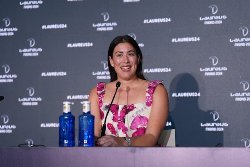Cablegate: Milgroup Bogota (2) -- Closing the Colar's
VZCZCXYZ0002
RR RUEHWEB
DE RUEHBO #4743/01 1802222
ZNR UUUUU ZZH
R 292222Z JUN 07
FM AMEMBASSY BOGOTA
TO RUEHC/SECSTATE WASHDC 6707
INFO RUEHCV/AMEMBASSY CARACAS 9131
RUEHLP/AMEMBASSY LA PAZ JUN LIMA 5203
RUEHZP/AMEMBASSY PANAMA 0426
RUEHQT/AMEMBASSY QUITO 5801
RUEAIIA/CIA WASHDC
RHMFISS/CDR USSOUTHCOM MIAMI FL
RUEKJCS/SECDEF WASHDC
RUEKJCS/SECDEF WASHDC//USDP ADMIN/CHAIRS//
UNCLAS BOGOTA 004743
SIPDIS
SIPDIS
E.O. 12958: N/A
TAGS: PREL PGOV MARR PTER CO
SUBJECT: MILGROUP BOGOTA (2) -- CLOSING THE COLAR'S
LEADERSHIP GAP
REF: BOGOTA 2290
-------
Summary
-------
1. Personnel shortages in officer and NCO positions are a
handicap to expansion of the Colombian Army's fight against
the FARC. With guidance from the U.S. Army Mission, the
Colombians are piloting new faster-track training courses,
drawing officer candidates from civilian college graduates
and sourcing NCOs from among experienced professional
soldiers. Aside from addressing immediate leadership gaps,
the programs will inject a broader cross-section of
Colombians into command levels and increase mobility
prospects for professional recruits to rise to NCO roles.
End Summary.
2. This is the second in a series of cables profiling
activities of the U.S. Military Group in Colombia. Its
missions (Army, Navy, Air Force, Logistic, and Air Component
Coordination Element) provide equipment and advisory support
to the respective service arms of the COLMIL. Its Planning
and Assistance Training Teams (PATTs) are units of two or
three U.S. military personnel co-located with the Colombian
Military, providing field training in combat skills and
guidance to commanders and staff.
------------------------------
Shortages of Officers and NCOs
------------------------------
3. Severe personnel shortages in leadership positions are
jeopardizing the Colombian Army's capacity to expand its war
effort against the FARC. Due to rapid growth in its forces
since 2002, the Army is short by 1,425 officers and 5,143
non-commissioned officers (NCOs). Roughly half of Army
platoons are led by NCOs instead of officers, increasing the
NCO deficit. Moreover, the Army continues to create new
units, mostly offensive mobile brigades (BRIMs) to attack
FARC strongholds; officers and NCOs who lead these BRIMs are
pulled from existing units, exacerbating the problem. The
current Army training system, both time consuming and
expensive, does not produce sufficient leaders to man the new
units, nor does it meet attrition levels of existing
elements.
-----------------------------------
U.S. Leadership Training and Advice
-----------------------------------
4. The U.S. Army Mission (ARMIS) provides training courses
to new Colombian Army (COLAR) officers and NCOs, and that
cooperation has yielded a channel for strategic advice on
leadership planning. Within the officer corps, ARMIS sends
about 40 top-performing COLAR cadets each year to a six-week
course in tactical leadership, preparing them to command
small units of troops. Among senior NCOs, MILGP sponsors two
courses annually across all branches of the Colombian
military, jointly with other Latin countries. ARMIS also
maintains a full-time exchange sergeant at the COLAR NCO
Academy who updates training doctrine per U.S. standards.
This engagement in educating new leaders has led to a trusted
counselor role with the Military Forces Commander and senior
COLAR staff on career progression and leadership planning,
using U.S. models. Recommendations of more authority for
NCOs, for example, have led COLAR to create the new senior
NCO rank of Command Sergeant Major.
-----------------------
New Fast-Track Training
-----------------------
5. Recognizing its urgent need to expand leadership ranks,
and following MILGP recommendations, the COLAR is
supplementing its traditional training with shorter-duration
alternatives. The Army Military Academy's standard officer
course yields 550-600 line officers per year after a
three-year program that is half academic and half military
training. Beginning in June 2007, the Academy will run a new
course, of just one and a half years of only military
training, for 160 civilians already holding undergraduate
degrees. For NCOs, the normal program involves 18 months of
training followed by two years of duty with a (defensive)
territorial unit before assignment to an offensive combat
unit. The NCO school is now piloting a new course of only
six months targeted to 360 professional soldiers who are
already seasoned combat veterans.
-------------------------
Greater Breadth, Mobility
-------------------------
6. Aside from helping to address the COLAR's leadership gap,
the new training courses represent paradigm shifts in
commissioning of Army officers and sourcing of its NCOs. By
accepting civilian college graduates as officer candidates,
the COLAR will expand the breadth of Colombian society in its
command positions. Sourcing NCOs from the enlisted ranks of
professional soldiers grants a new channel of upward mobility
for skilled and experienced fighters. The parallel creation
of the rank of Command Sergeant Major aims to increase NCO
influence by placing key NCO leaders at brigades and
divisions, an important cultural shift for the Colombian
military.
Drucker


 UN News: Healing Page By Page In Earthquake-affected Türkiye
UN News: Healing Page By Page In Earthquake-affected Türkiye Save The Children: Rate Of Attacks On Healthcare in Gaza Higher Than In Any Other Conflict Since 2018
Save The Children: Rate Of Attacks On Healthcare in Gaza Higher Than In Any Other Conflict Since 2018 UN News: Green Light For New Cholera Vaccine, Ukraine Attacks Condemned, Action Against Racism
UN News: Green Light For New Cholera Vaccine, Ukraine Attacks Condemned, Action Against Racism Laureus: Grand Slam Champion Garbiñe Muguruza Announces Retirement Ahead Of Laureus World Sports Awards
Laureus: Grand Slam Champion Garbiñe Muguruza Announces Retirement Ahead Of Laureus World Sports Awards Carbon Market Watch: Going For Green - Is The Paris Olympics Winning The Race Against The Climate Clock?
Carbon Market Watch: Going For Green - Is The Paris Olympics Winning The Race Against The Climate Clock? New Zealand Defence Force: NZDF Working With Pacific Neighbours To Support Solomon Islands Election
New Zealand Defence Force: NZDF Working With Pacific Neighbours To Support Solomon Islands Election